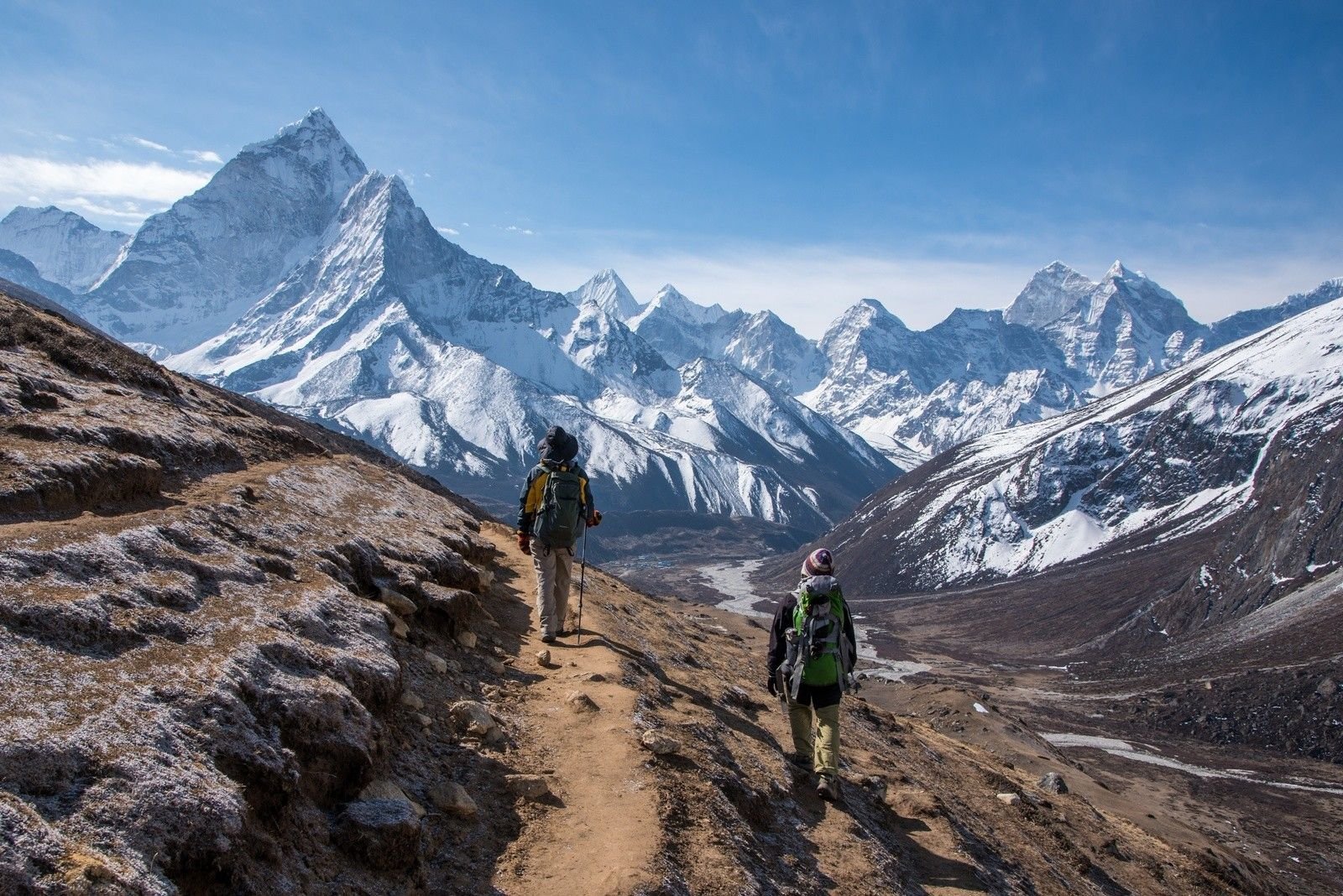If you’re thinking about trekking to Everest Base Camp then you, dear reader, have come to the right place. Hiking Everest Base Camp is a dream for many - and one more likely to be accomplished than standing on top of the highest mountain in the world.
The trek to Everest Base Camp is not to be confused with an expedition to summit Mount Everest. Mount Everest and Everest Base Camp are in roughly the same place geographically speaking, of course - the gorgeous Himalayas. But Everest Base Camp, being a base camp and all, is at the opposite end of the mountain to the 8,848m summit. It’s at the (slightly) more manageable altitude of 5,380m above sea level. Hiking Everest region is much more achievable than summiting.
The trek to Base Camp kicks off in the town of Lukla in the Solukhumbu region of Nepal. From there, the camp is an approximate 130km, 11-day return trip. You don’t have to be a serious mountaineer to take the trip, but you do need a good level of fitness. You also need enough wanderlust in your blood to eye up an 11-day hike in Nepal and think “that sounds like a good idea”, which is certainly not the case for everyone on our lovely little planet.
“Trek along a tributary valley and take in dramatic mountain views of Nuptse, Lhotse, Ama Dablam and Mount Everest, the biggest mountain in the world…”
Of course, as most human beings from around four years old and up could tell you, the reason Mount Everest is so famous is mainly that it’s the highest mountain in the world. So even when trekking to Everest Base Camp, acclimatisation is always going to be crucial. Days off for exactly that are included in the 11-day itinerary of the trek.

Travel with the right guides and they’ll make sure you adapt to the altitude properly. The outward journey to Everest Base Camp tends to take longer than the return with that in mind. You rise slowly, and descend fast.
Please note: On the 1st April 2023, the Nepal Tourist Board (NTB) made changes to the trekking laws for all foreign trekkers, cyclists, and mountain climbers visiting Nepal's mountain regions and national parks. All trekkers (solo or in a group) must now be accompanied by a licensed guide. To learn more about what this means for you, read our update on the Nepal trekking requirements.
What is Everest Base Camp?
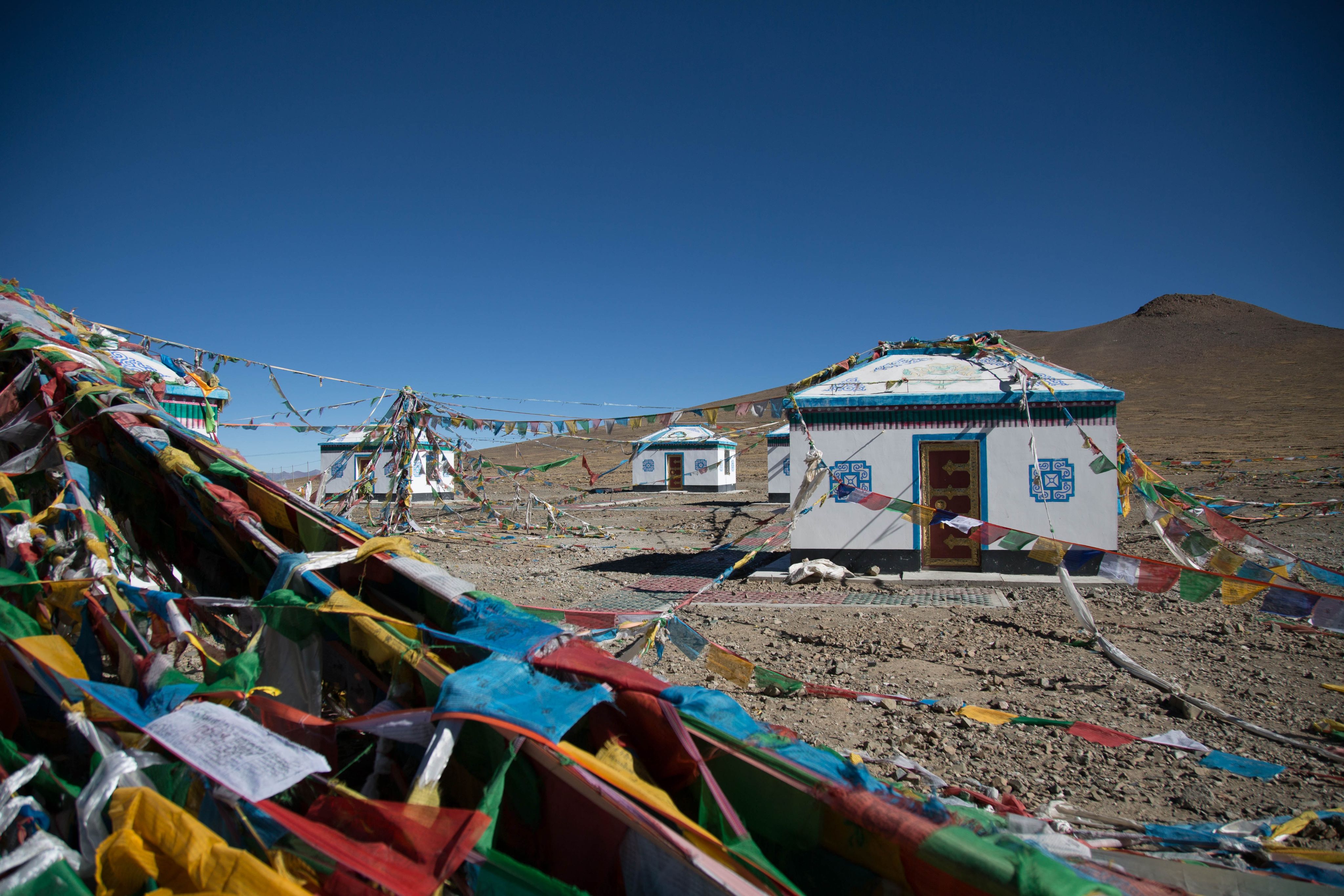
Everest Base Camp is just a term used to describe any camp at the base of Mount Everest. It’s all in the name, really. Slightly more specifically, it’s where climbers begin their quest to reach the summit of Mount Everest. In April and May, you’ll likely find mountaineers waiting in Everest Base Camp for the right weather to launch their expedition. Mid and late May are the most popular times to ascend.
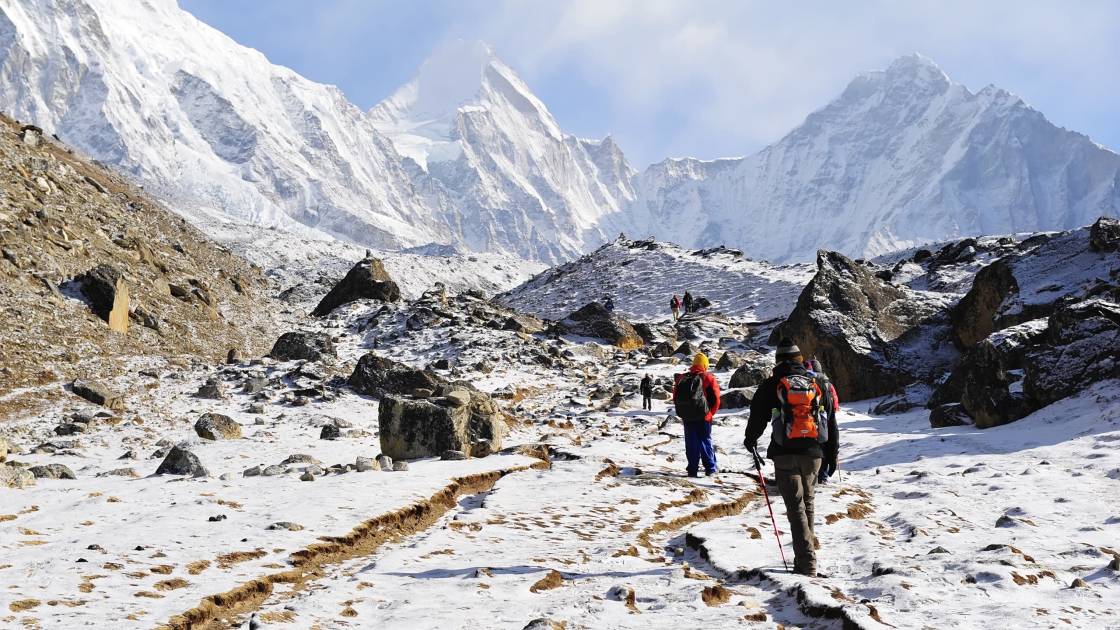
The aura of the world’s highest peak extends to more than just those set on making it to the top, though. The Everest Base Camp trek has become legendary in its own right.
Where is Everest Base Camp?
There are actually two Everest Base Camps, on opposite sides of Mount Everest.
South Base Camp, mapped above, is in Nepal and is the one people normally mean when talking about “trekking to Everest Base Camp”. The North Side Base Camp is located in Tibet, and requires a permit from the Chinese government to use. That’s on top of the permit required to visit Tibet itself. Both base camps are used by climbers ascending Mount Everest, with the Nepal Base Camp used by climbers aiming for the southeast ridge of Everest and the North Base Camp in Nepal used when climbing the northeast ridge.
We’re going to focus on the South Base Camp, in Nepal.
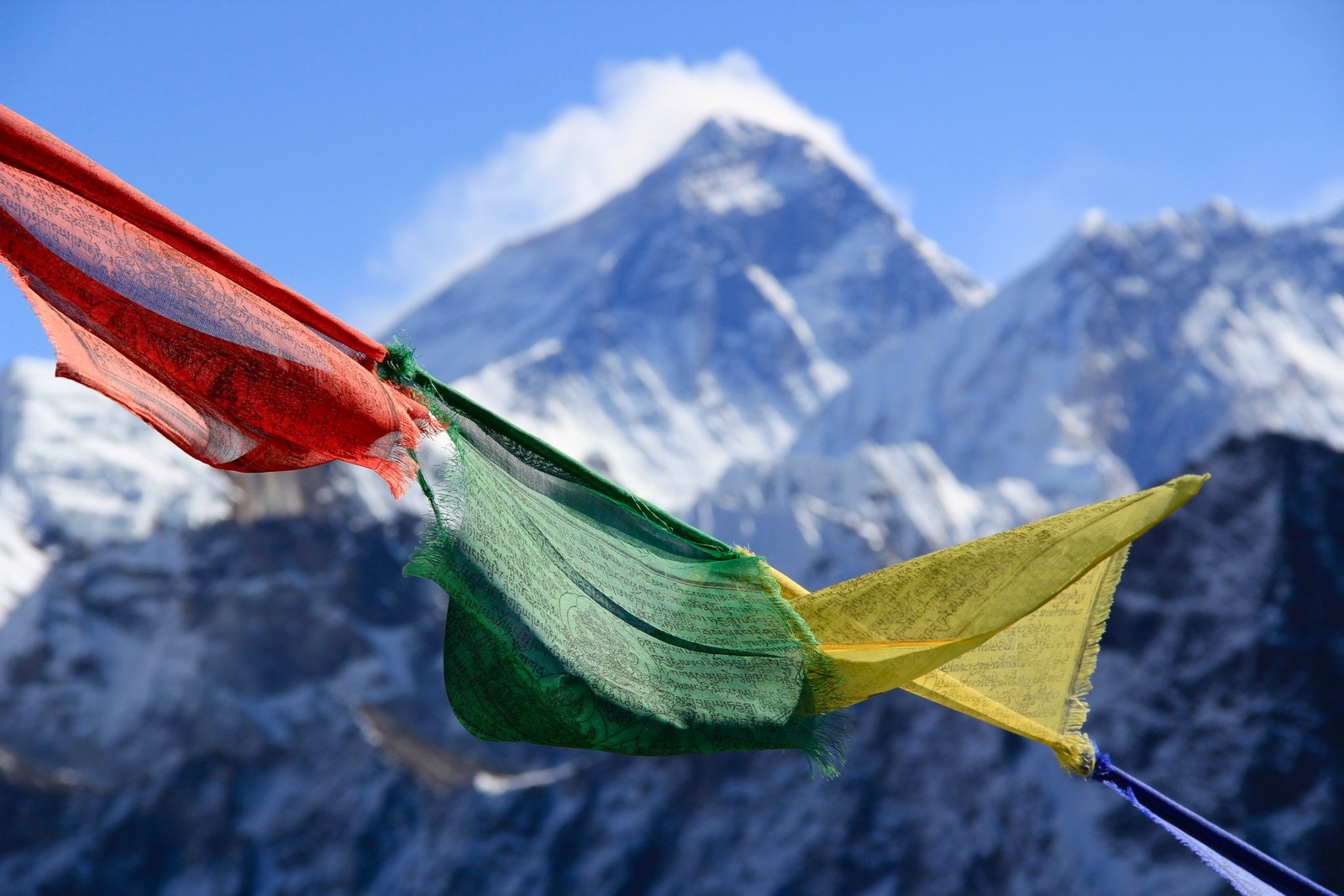
Mount Everest is in the Sagarmatha National Park in the northern part of the Solukhumbu District of the country. That’s in the Mahalangur Himal sub-range of the Himalayas. ‘Sagarmāthā’ is the Nepali name for Mount Everest. The English name ‘Mount Everest’ only took hold in 1865. It comes from the former British Surveyor General of India ‘Sir George Everest’. The name was suggested to the Royal Geographical Society, against Everest’s objections, by his successor Andrew Waugh.

You’ll meet people of all professions in Everest Base Camp, from all walks of life. People talk in languages from around the globe and there’s a buzz in the air. You can often hear avalanches drop down nearby mountains and the views of the 7,861m Nuptse and 8,516m Lhotse are just as – if not more – dramatic than that of Everest itself.
What Permits Do I Need for Everest Base Camp?
Everest Base Camp lies inside the protected zone in the Sagarmatha region, which means you need an entry permit to enter. Two, in fact. The first is the newly introduced Khumbu Pasang Lhamu Rural Municipality Entrance Permit, which costs NPR 2,000. This can be purchased in Lukla and is valid for four weeks.
There's also the Sagarmatha National Park Entry Permit (NPR 3000), available in Monjo or at the Department of National Park and Wildlife Conservation (DNPWC) counter at Bhrikuti Mandap in Kathmandu.
You'll also need to obtain a TIMS card, for which you'll need a photograph of your passport and two passport-sized photographs. This costs NPR 1,000 and can be obtained from Tourist Service Center, Bhrikutimandap, alongside Government registered trekking companies in Kathmandu and Pokhara. Good trip hosts will prepare and apply for all the permits you need - the cost of which will likely be included in the trip price.
Everest Base Camp: The Route
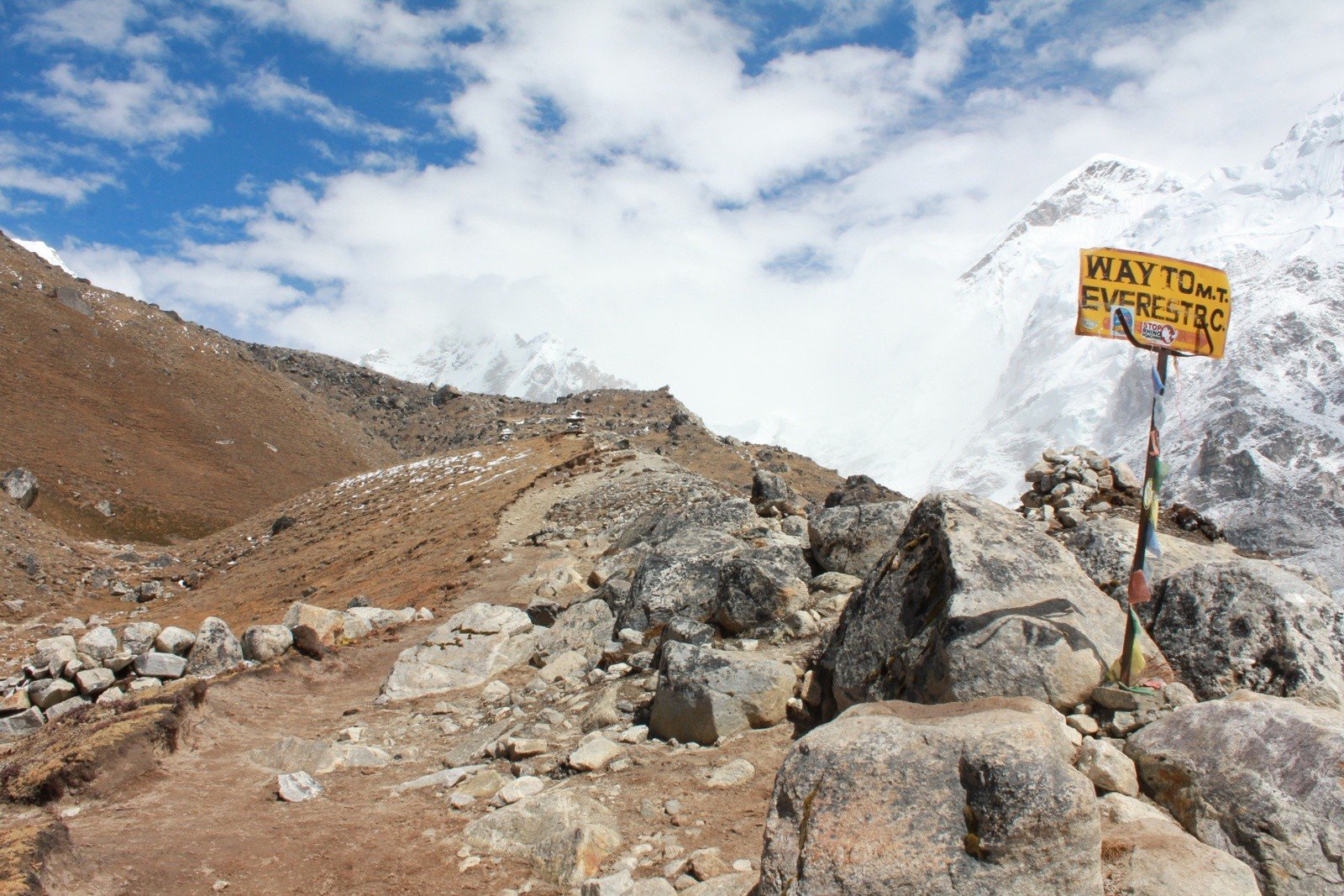
Let’s unpack the Everest Base Camp trek day by day. In order to get the most out the journey, you’re going to want a reliable company, and a guide who knows their stuff. Good guides will avoid doubling back on themselves as much as possible. They’ll also know when to trek to avoid the major crowds. Here’s an awesome 11-day route from Lukla to Mount Everest which ticks all those boxes:
Day 1: Lukla Airport to Phakding. Approximately four hours of hiking covering 5.3 miles (8.5km). It it feels odd to be starting at an airport, rest assured it's a remarkably beautiful one. The route for day one will actually see you descend around 200m. You'll follow the Dudh Kosi River, cross your first suspension bridge and pass a fair few Nepali prayer wheels - soon to be a common sight.
You'll see the famous Hillary Suspension Bridge - the longest suspension bridge on the trek - and you'll get a first glimpse of the might Mount Everest.
Day 2: Phakding to Namche Baazar. You'll walk 6.2 miles (10km) over around six hours, but it will feel longer as you take on the uphill to Namche Bazaar. The upside? You'll see the famous Hillary Suspension Bridge - the longest suspension bridge on the trek - and you'll get a first glimpse of the mighty Mount Everest.
Day 3: Acclimatisation and exploration in Namche Baazar at 3,440m. This is a rest day with optional hiking to a nearby view point, in a beautiful area.
Day 4: Namche to Tengboche. You'll hike for six hours, covering 5.8 miles (9.3km). This Trek will take you along a tributary valley and provide dramatic mountain views of Nuptse, Lhotse, Ama Dablam and Everest.

Day 5: Tengboche to Dingboche. You'll walk six hours, covering 6.5 miles (10.4km) through summer yak pastures on a gentle gradient. Expect sublime mountain and valley views. You'll climb above the tree-line, walk along cliff-edges and follow rivers with remarkable high Himalayan peaks for your backdrop.
Day 6: Another acclimatisation day, allowing you to relax in Dingboche at 4,410m. This is a rest day with optional hiking to Nagarjun Hill or Chukung Village. There are views of Ama Dablam, Makalu, lakes and glaciers.
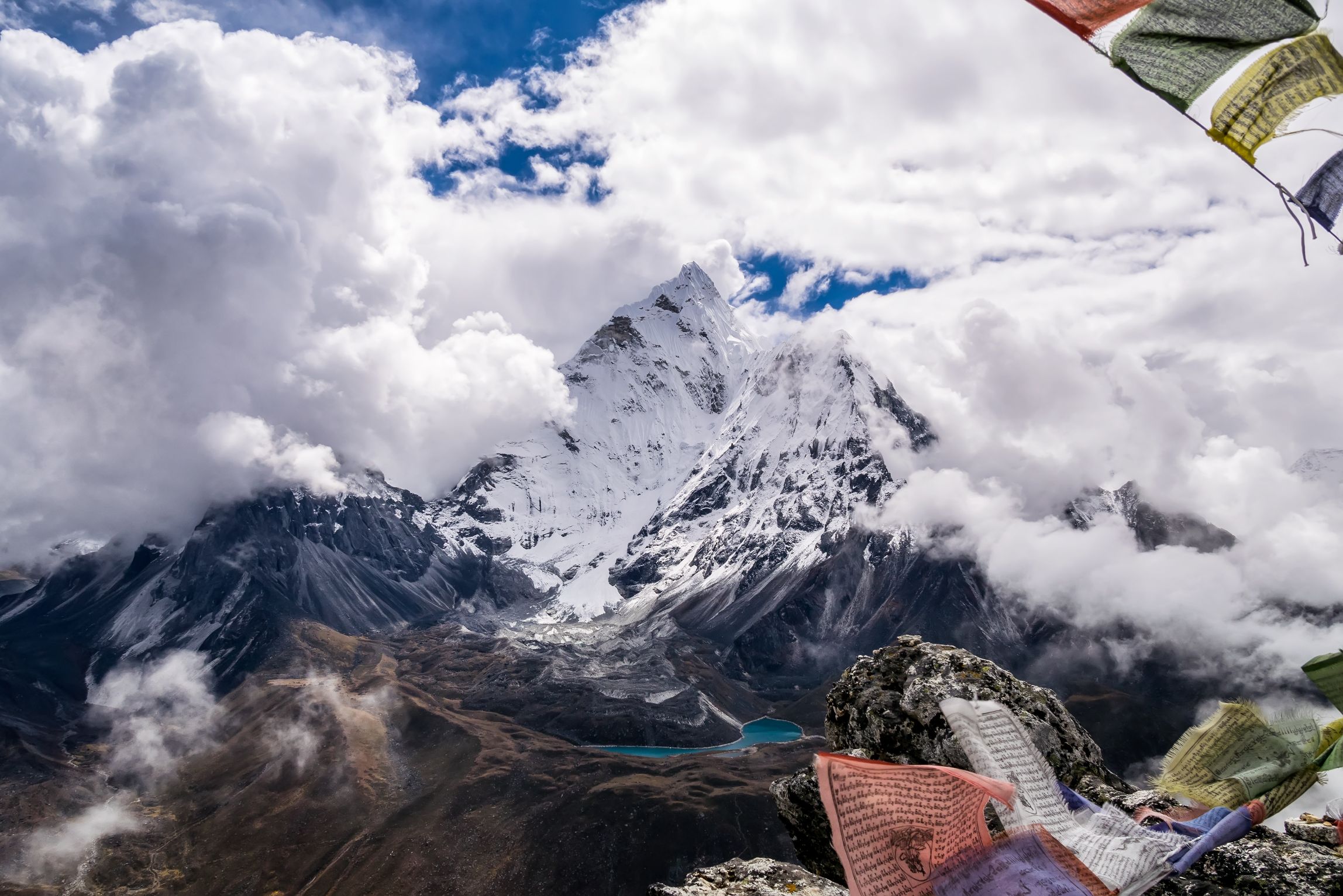
Day 7: Dingboche to Lobuche. Today you're back on the trail, tackling 5 miles (8km) and walking for around five hours. You'll be starting off the hike on a relatively flat trail. Then comes the Thukla pass - a tough 200m uphill to get you to 4,800m. There's a touching memorial at the top of the pass to the Sherpas and climbers who have died on Everest. You'll reach your teahouse then have the option to climb to a hill with views up to the Khumbu Glacier and Khumbu Icefall.
You'll climb Kala Patthar, which at 5,550m is the highest point on the trek, and watch the sunrise over Mount Everest from the top.
Day 8: Lobuche to Gorak Shep to Everest Base Camp at 5380m and back to Gorak Shep. You'll be hiking six hours and 5 miles (8km) on this day which will take you to the iconic EBC. Navigate the Khumbu Glacier and climb to Everest Base Camp - congratulations! - before heading back to Gorak Shep at 5,364m for the night. The section from Gorak Shep to Base Camp is very demanding, as you'll walking at very high altitude - but the Icefall, and EBC with it, keeps getting closer and closer.
Day 9: Gorak Shep to Pangboche via Kala Patthar. This is an enormous day at 13.2 miles (21.4km) long. Expect to be on the trail for around eight hours. It's also the day with the best views of Mount Everest. You'll climb Kala Patthar, which at 5,550m is the highest point on the trek, and watch the sunrise over Mount Everest from the top. There's something unforgettable about that light coming over the mountain.
Day 10: Pangboche to Namche Bazaar. This 8.3-mile (13.5km), six-hour hike will see you descend back down to Phungi Thanga. You'll be able to toast your trek in familiar surroundings.
Day 11: Namche to Lukla. The final descent on the route still asks a lot, at 11.1 miles (18km) and six hours. You'll pass through forests of rhododendrons and through Sherpa villages. Expect to be a little emotional as you bid farewell to your hiking buddies and the Himalayas - one of the planet's greatest landscapes.
An alternative route to Everest Base Camp, via Gokyo Lakes

If you want to avoid the crowds altogether and take a less travelled route to Base Camp, then look no further than the route from Gokyo to Everest Base Camp.
This route takes you past the famously scenic Gokyo Lakes. You’ll be trekking a remote, hidden Nepali route to Everest Base Camp which takes 15 days (including two days of acclimatisation) rather than 11. The journey traverses the Cho La Pass at 5330m, a steep climb which involves travelling over a glacier. You’ll also see the remarkable Gokyo Valley, which is a real hiking treat.

Everest Base Camp: FAQs
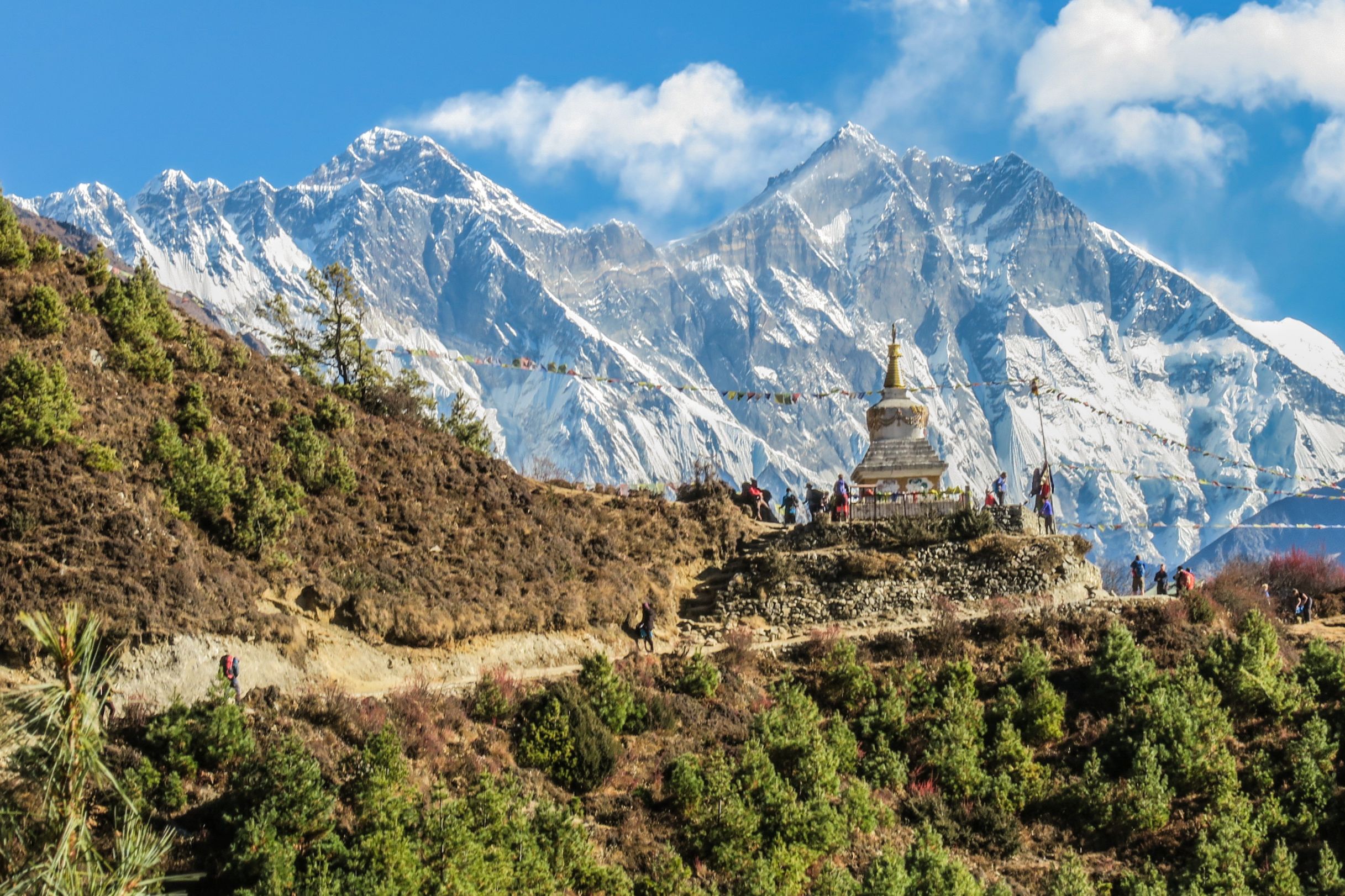
How long is a day of hiking on the Everest Base Camp trek?
An average day of walking on the Everest Base Camp trek is around six hours long. Of course, that depends on your pace.
How hard is it to get to Everest Base Camp?
While achievable without mountaineering experience, the trek is no walk in the park. Day two has a tough uphill to Namche Bazaar and day four can be challenging as you approach the holy ground of Tengboche.

Still, if you’re fit enough, and you’ve got the appropriate gear and the right attitude, then there’s no reason you shouldn’t be able to complete the trek to Everest Base Camp. It’s not a particularly technical climb.
What Elevation is Everest Base Camp?
Everest Base Camp is at 5,380m. The high point of the Everest Base Camp Trek is actually Kala Patthar at 5,550m. Mount Everest towers over the camp, at 8,848m.
Should I worry about altitude sickness on the Everest Base Camp trek?
The risk of altitude sickness and acclimatisation of the trip is the most common concern for many trekkers on this trek. It’s the reason that most who don’t make it up to Everest Base Camp have to turn back early. The highest point on the Everest Base Camp trek is Kala Patthar at 5,550m and this is, of course, going to have an effect on trekkers. There will be less oxygen in the air than down at the start.
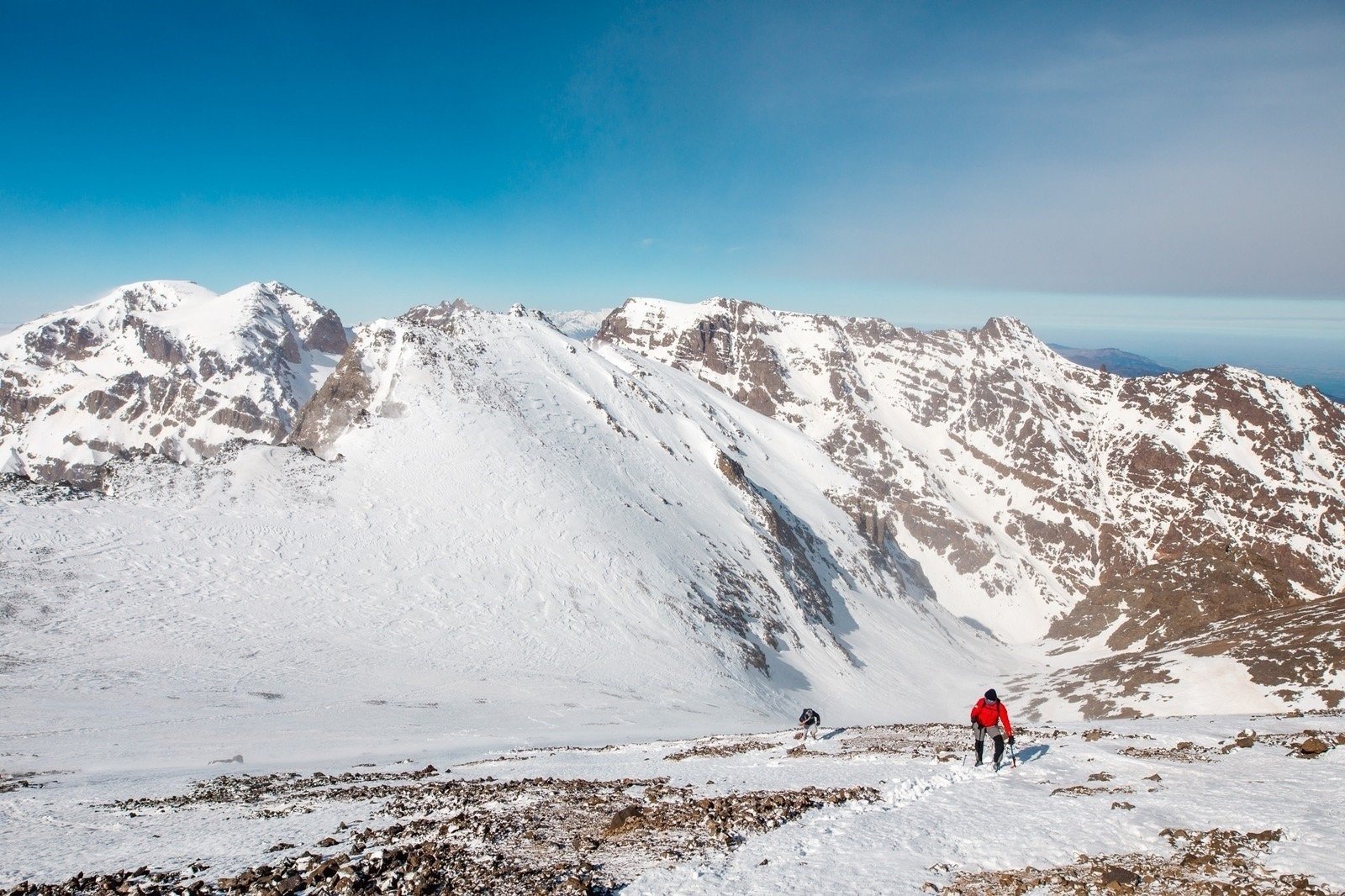
There isn’t too much you can do in standard trekking preparation for the high altitudes. If you travel with a reputable company who have properly trained guides, though, they will make sure that you acclimatise properly. It’s all about taking your time, and taking the appropriate days off as needed. As you ascend further up the mountains, good guides will know exactly how to look after you. They’ll guide you to safety as best they can should the worst happen and something goes wrong while you’re making your ascent, which is unfortunately possible on any high-altitude, long-distance trek or challenging hike.
A more moderate hiking option, which still offers spectacular views of the world's highest mountain, is the Everest Panorama Trek. This trek doesn't go beyond Tengboche, so the highest altitude you'll reach is 3,800m.
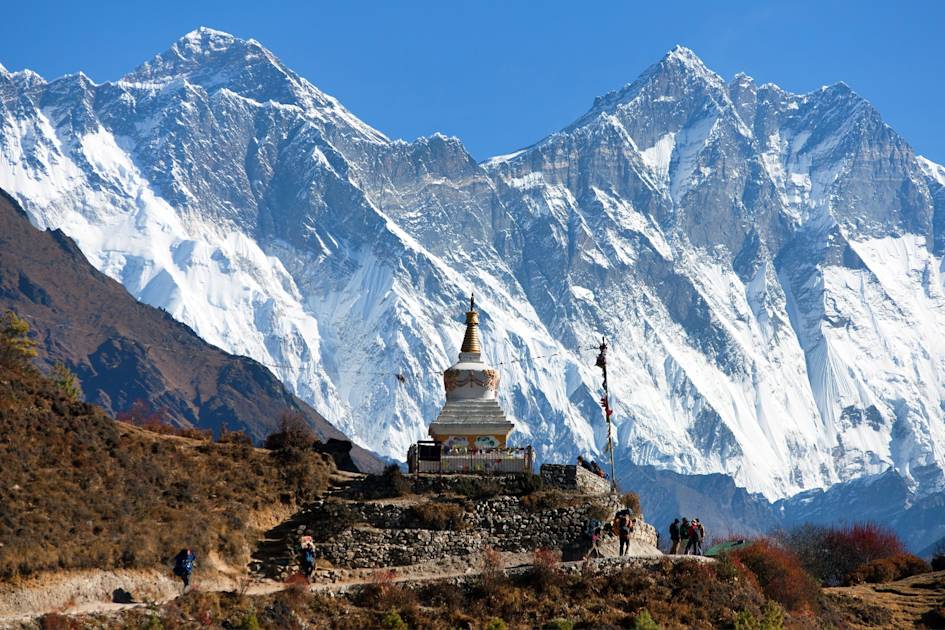
How Long Does it Take to Climb to Everest Base Camp?
There are various itineraries for climbing to Everest Base Camp. On average, 11-12 days are required to climb to Everest Base Camp with proper acclimatisation, but many people take longer. The journey starts with your arrival in Lukla, usually via a short flight from Kathmandu. It’s worth remembering, you’re going to need more than 11 days in Nepal in total. Most Everest Base Camp tours, including the days flying to and from Nepal, and the hike itself, takes around 18 days.
How to Get to the Everest Base Camp Trek?
The Everest Base Camp trek starts in Lukla, conveniently at the Airport. A domestic flight from Kathmandu to Lukla only takes around 35 minutes. It takes around 13-15 hours to do the same journey by jeep.
If you're looking simply to reach Everest Base Camp, without a trek, then the fastest option is a helicopter, as used by many who go on to climb Everest.
When is the Best Time to Trek to Everest Base Camp?
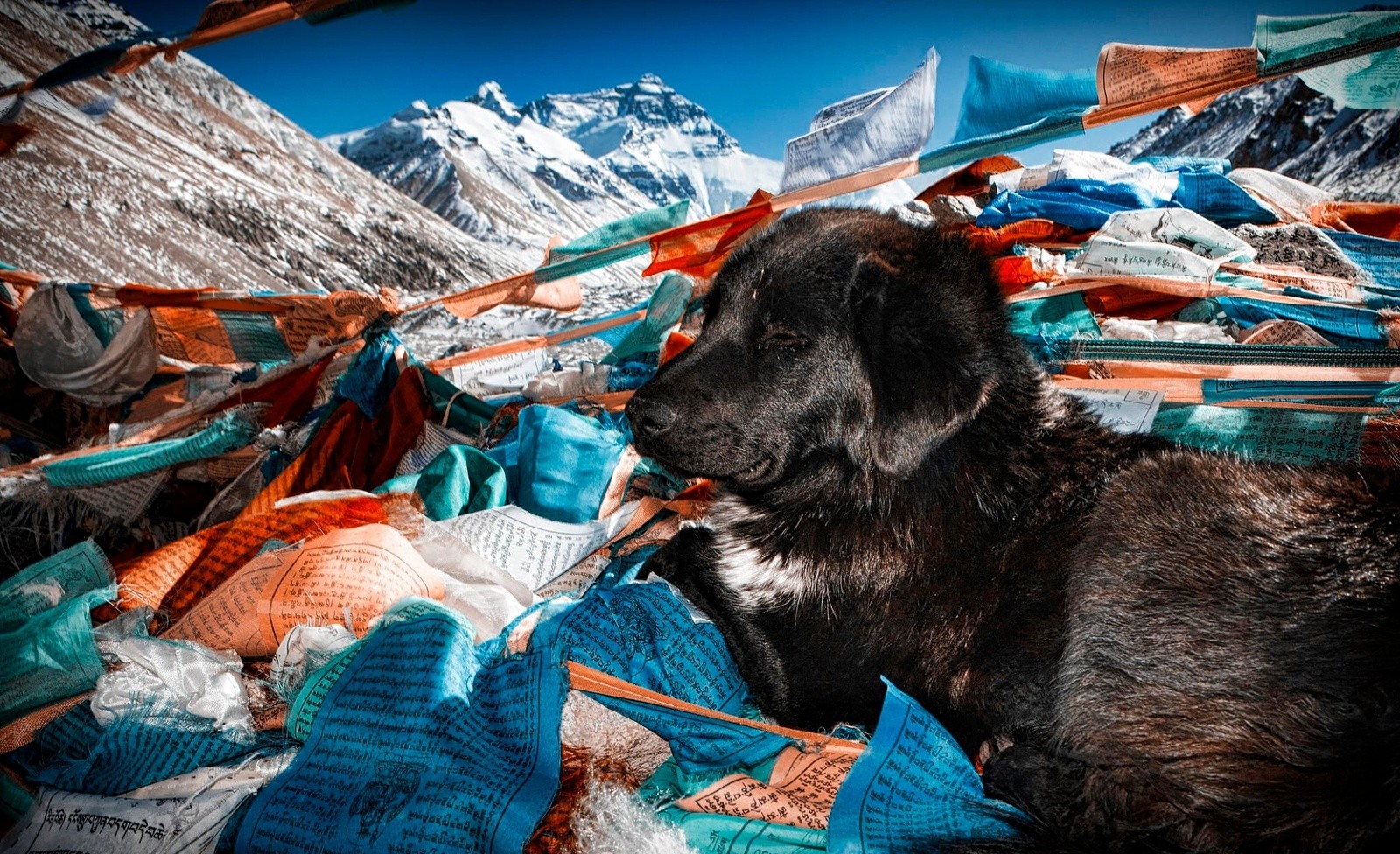
Apart from the obvious answer of “whenever the dog pictured above is there”, the best time to take the trek to Everest Base Camp is typically the pre-monsoon season. This is from January-May. The other main alternative is trekking in the post-monsoon season, which is from September-December. Go in between that and – the detectives amongst you will already have worked out – you’ll be hiking in monsoon season, which is not good.
If you travel in December, January or February then you’ll miss out on a lot of the crowds on the Everest Base Camp trek. A good guide should tailor your route to ensure you don’t spend much time in crowds anyway, though. That said, you’ll also be tackling the hike at a much colder time, and so may face weather delays. Many of the teahouses may be shut as you travel, too.
The climbing season on Mount Everest is normally a window of around 10-15 days in May (or until the monsoons arrive in June). If you want to go to Everest Base Camp when the camp will be buzzing with people aiming to get to the summit, that’s your window. May is normally the warmest month of the year on the Everest Base Camp trek. September-November are known to provide clearer skies, and more reliable views of the stunning scenery of the Himalayas.
What to Pack For a Trip to Everest Base Camp
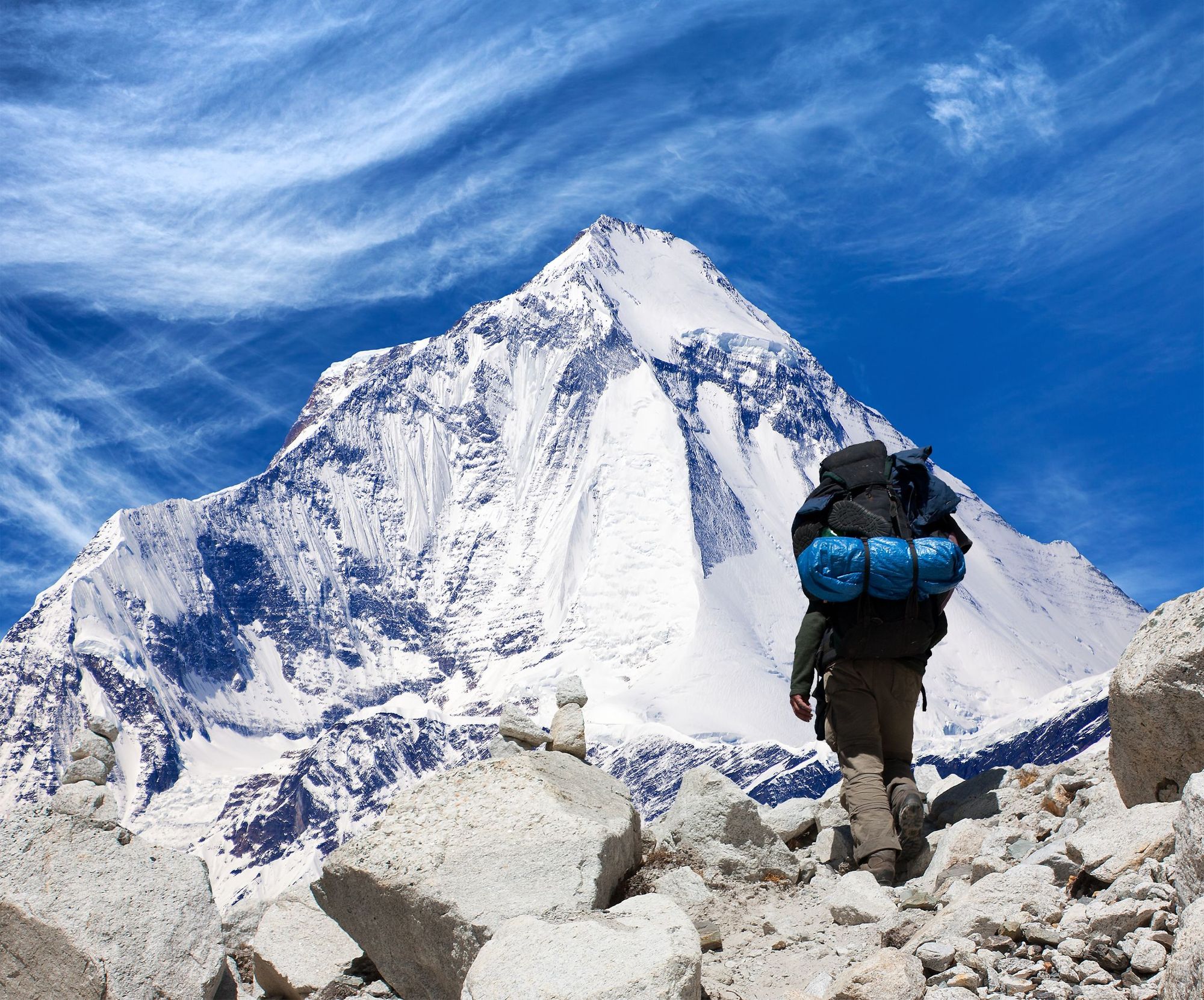
For a trip to Everest Base Camp, you'll need to make sure you're fully equipped to handle the cold mountain temperatures, the many kilometres of trekking, and camping outside. Chances are that your trip host will provide tents, a sleeping mat and a camping stove, but do double check in advance to make sure.
You'll need to make sure you're equipped with a four season sleeping bag, and everything else you might need to stay warm and dry, from waterproof trousers to a lightweight down jacket. We've published a full kit list for hiking Everest Base Camp if you'd like further details.
It's worth pointing out that many treks to Everest Base Camp will involve a small plane flight first. The flights out to Lukla Airport have a restriction of 10kg baggage and 5kg hand luggage, so you'll need to leave behind anything that isn't necessary (at your host's base in Kathmandu). Make sure you bring a day pack, which you can full with everything you need for the day's hike, and a rucksack or duffel which will be transported by your porter. Anything from 55-65 litres should be fine - too large and you risk it getting too heavy.
We cover the full packing list and guide, including insider tips from our very own Head of Adventures, Megan Devenish, and our Adventure Operations Manager (and resident Nepal expert) Jenny Cox in our what to pack for the trek to Everest Base Camp article.

Everest Base Camp to Summit: The route
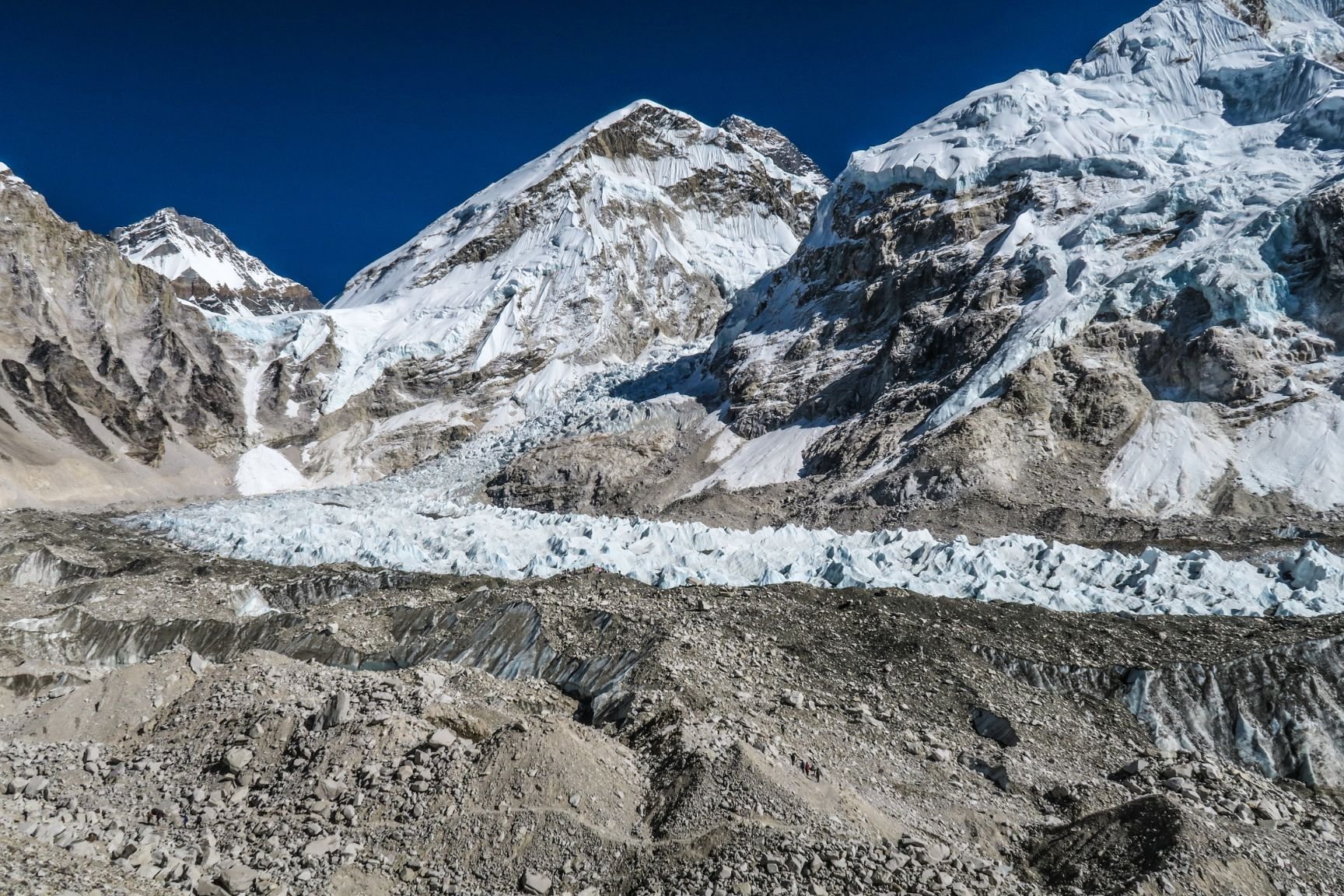
Naturally, most people who reach Everest Base Camp don't then go on to climb Mount Everest. Those who do climb Everest usually take a helicopter up to the EBC. Still, it's fascinating to look at the route from here up to the mighty summit.
By far the most common route up Everest is the Standard Route in Nepal:
- Everest Base Camp (5,380m) to one of the most dangerous points on the route, the Khumbu Icefall (5,486m) and on to Camp 1 (6,000m)
- Camp 1 (6,000m) to Camp 2 (6,400m), via the Western Cwm, a broad glacier with a gentle gradient, named by George Mallory after the Welsh ‘cwm’, meaning ‘valley’.
- Camp 2 (6,400m) to Camp 3 (7,200m), moving to the Lhotse Face. Climbers are often taking supplementary oxygen by the time they reach Camp 3.
- Camp 3 (7,200m) to Camp 4 (7,950m), completing the ascent of the Lhotse Face and moving to the South Col between Lhotse and Everest.
- Camp 4 (7,950m) to Everest Summit (8,850m), leaving late at night or very early for the summit push. At the summit of Mount Everest, most people take in around 30% the oxygen they would at sea level. From here, climbers may aim to go via Camp 4 and descend to spend the night at Camp 2.
- The final day would then take a successful climb from here back to Base Camp.

Read more:
- What's the Difference Between Gokyo Lakes and EBC?: What's the difference between the two routes, and why might you chose to trek one over the other.
- Customer Story: Everest Base Camp: See EBC through the eyes of photographer and Much Better Adventurer Olly Edgecombe.
- Solukhumbu District Guide: Our guide to trekking in the Solukhumbu District and Everest Region of Nepal.
Inspired? Then check out our hand-picked trip to tackle Everest Base Camp yourself, and other trekking and hiking adventures in Nepal.

